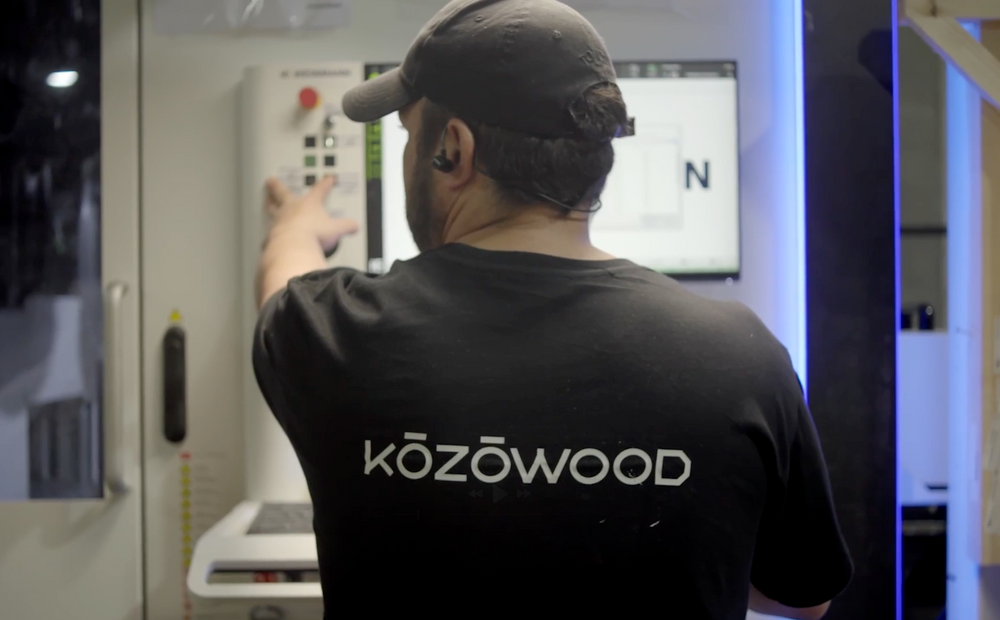(01)
Timber Frame & CLT
Tradition and Modernity with Timber Frame and CLT
Wood, as a building material, has deep roots in the history of architecture, but it was through the introduction of innovative techniques like Timber Frame and CLT that it became a viable choice for structures of greater complexity and scale. Wood Frame uses wood as the main structure, providing a lightweight and efficient approach to construction, while CLT, a cross-laminated timber panel, offers impressive strength, making it ideal for multi-storey buildings.
These technologies not only expand design possibilities but also provide exceptional solutions to environmental and energy efficiency issues. CLT, in particular, plays a crucial role in reducing the carbon footprint by absorbing CO2 throughout its lifespan. The combination of sustainability and structural innovation creates spaces that, in addition to being functional, provide a pleasant and harmonious environment. In projects like those of Kozowood, the use of these innovative technologies not only contributes to reducing environmental impact, aligning with ESG principles, but also creates spaces that promote well-being, sustainability, and energy efficiency.
(02)
Wood Constructions Around the World
Mjøstårnet in Brumunddal, Norway
Mjøstårnet, located in Brumunddal, Norway, is currently the tallest wooden building in the world, with 18 floors and 85.4 meters in height. This skyscraper was designed using CLT for the structure, along with other sustainable wood technologies. The project is a milestone in the use of wood in high-rise construction and an example of how wood can be used safely and effectively in modern urban buildings.
This building not only represents an innovation in sustainable architecture but also serves as a model for low-carbon construction. Mjøstårnet combines the functionality of wood with aesthetics, creating a space that is as sustainable as it is impressive. The use of CLT allows the building to be constructed more quickly, at a lower cost, while still performing efficiently in terms of thermal and acoustic properties. The Mjøstårnet project is a true demonstration of how wood can be a viable and robust construction material for future skyscrapers.
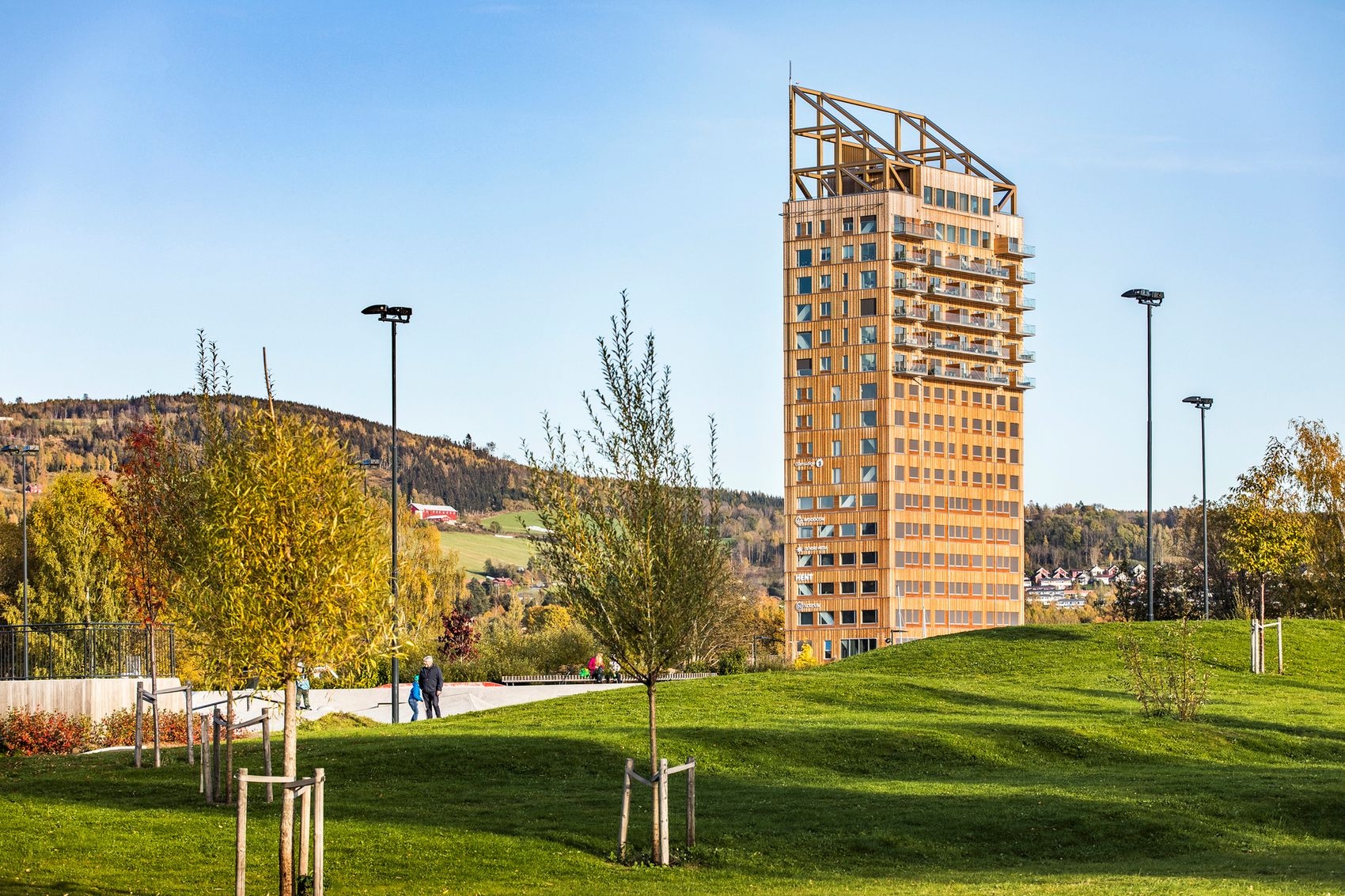
Mjøstårnet
The Ascent in Milwaukee, USA
The Ascent, located in Milwaukee, Wisconsin, is the tallest wooden building in the United States, with 25 floors. This building was designed using CLT and is an impressive example of how wood can be used to create innovative architectural solutions in urban areas. In addition to its height, the project stands out for its sustainability, using wood to reduce carbon emissions and improve energy efficiency.
The Ascent offers a unique combination of modern design and ecological solutions. Each floor was designed to maximize natural light and reduce the need for artificial heating and cooling. Wood, which is the primary material of the structure, was also chosen for its ability to absorb carbon, thus contributing to a lower environmental impact. This project is pioneering not only because of its height but also as proof that wooden construction can be modern, safe, and sustainable, helping to pave the way for future large-scale projects.
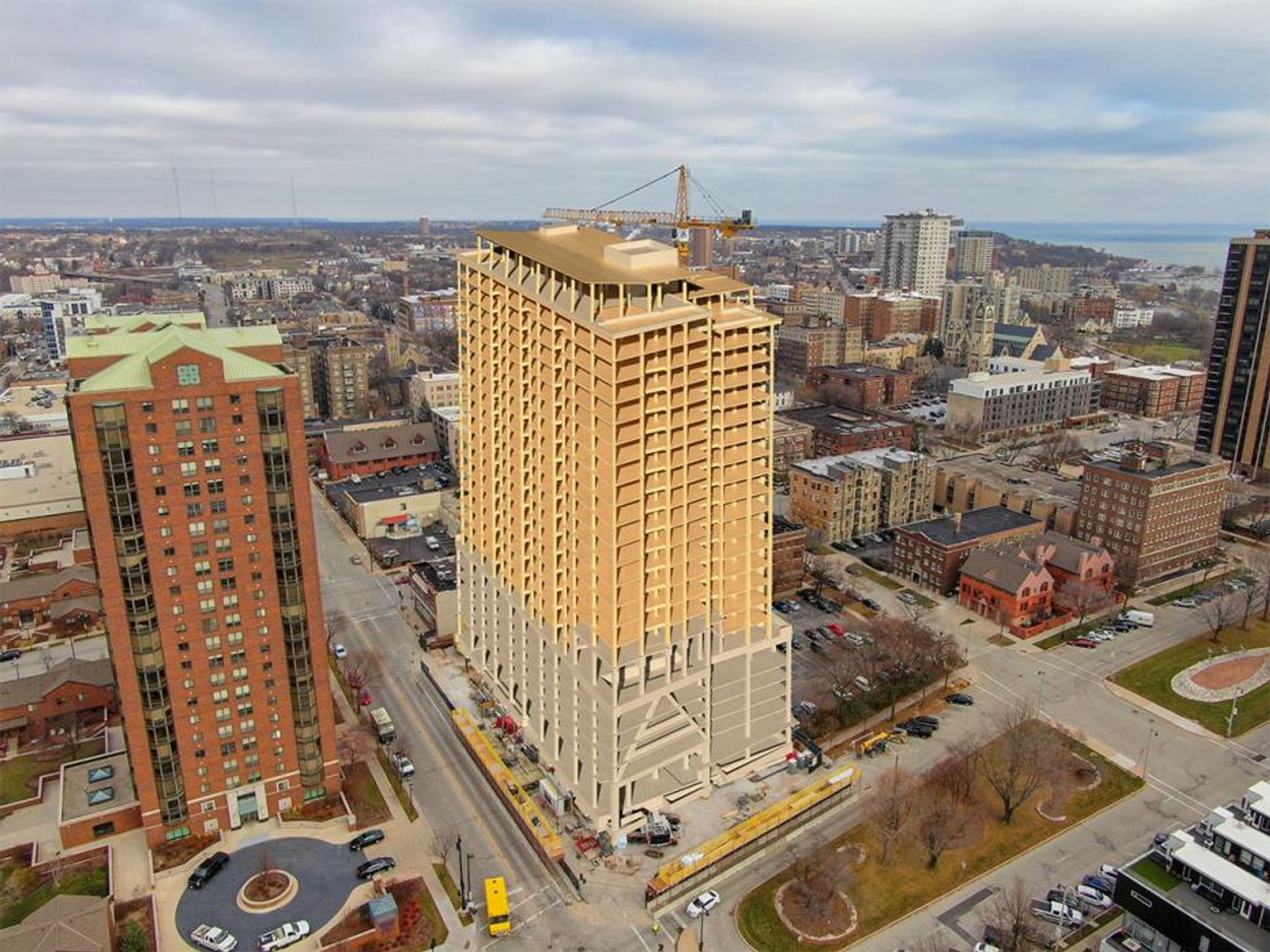
The Ascent
The Greenhouse in London, United Kingdom
The Greenhouse, in London, is an excellent example of how the Wood Frame system can be used to create sustainable urban buildings. This 7-storey building was designed to be a model of efficient construction, with a strong emphasis on sustainability and the use of wood as the main material. The central idea behind The Greenhouse was to create a space that reduces reliance on conventional materials while promoting an eco-friendly design.
The project was developed with the aim of creating low environmental impact architecture, using certified wood to reduce carbon emissions. The structure of The Greenhouse not only meets high sustainability standards but also integrates with the urban environment, offering residents a unique experience of living in harmony with nature. The building features intelligent design aimed at reducing energy consumption, while providing a healthy and comfortable environment. This project is an excellent example of how cities can become greener and more eco-friendly through the use of natural materials such as wood.
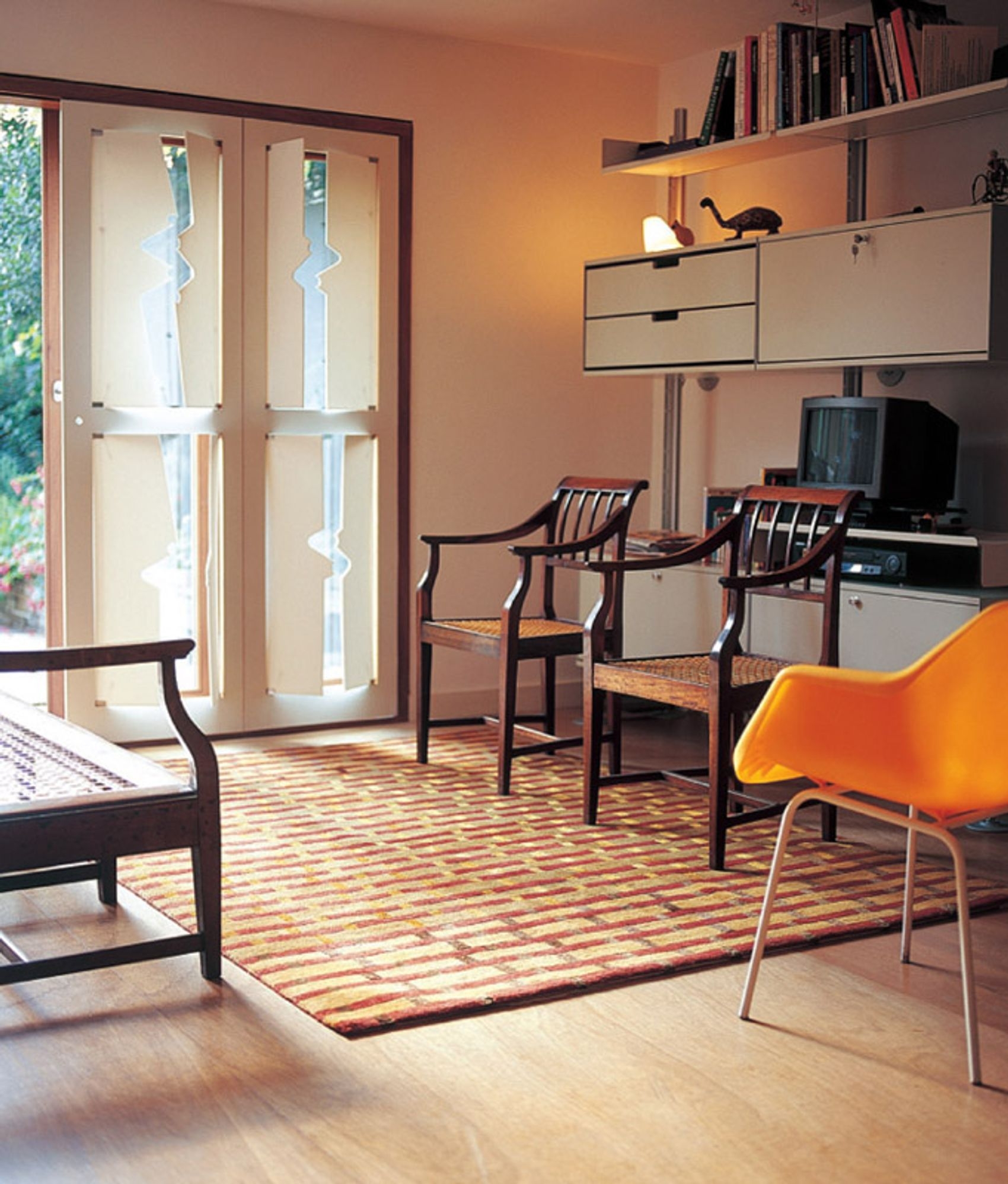
The Greenhouse
Wood Innovation and Design Centre in Prince George, Canada
The Wood Innovation and Design Centre (WIDC), in Prince George, Canada, is a 6-storey building that stands out as an example of innovation in the use of wood in commercial and public buildings. The WIDC was designed to be a showcase for sustainable design, using CLT to create a robust, efficient, and eco-friendly structure. This research centre aims to encourage the use of wood in commercial projects and demonstrate the capabilities of wood as a high-performance building material.
The construction of the WIDC is an excellent example of how the use of wood can extend beyond residential buildings to include commercial and public structures. The centre's design was conceived to be highly energy-efficient, making the most of the natural properties of wood to regulate the internal temperature. Additionally, the wood used in the construction comes from responsible and sustainable sources, ensuring that the environmental impact of the building is as low as possible. The WIDC is, therefore, a cutting-edge project that highlights the importance of seeking sustainable alternatives in the construction of large-scale structures.
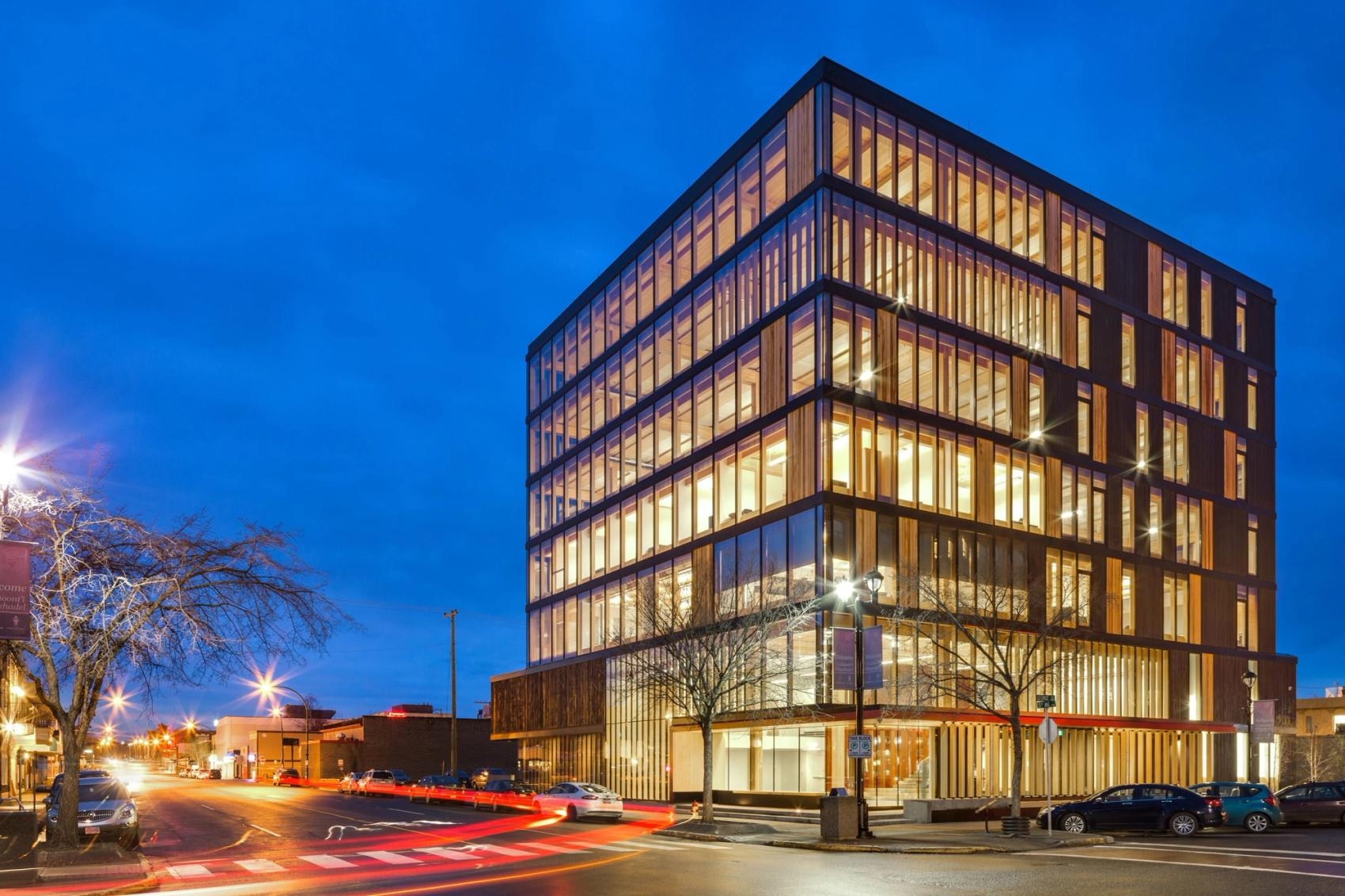
Wood Innovation and Design Centre
Maggie's Centre in London, United Kingdom
The Maggie’s Centre in London, designed by Steven Holl Architects, is a remarkable example of how wood can be used to create welcoming and therapeutic spaces. This support centre, dedicated to cancer patients, was designed to provide a tranquil and comforting environment, using CLT in its construction to ensure energy efficiency. Wood, with its natural qualities, helps create a welcoming space that promotes healing and well-being.
Every detail of the Maggie’s Centre was carefully thought out to provide comfort and emotional support, creating an environment that is both functional and deeply human. The design of the Maggie’s Centre promotes natural light and a connection with nature, offering a space that is not only functional but also deeply touches the soul of its users. This project demonstrates how architecture can go beyond mere functionality, becoming a powerful tool in enhancing the quality of life and well-being of individuals.
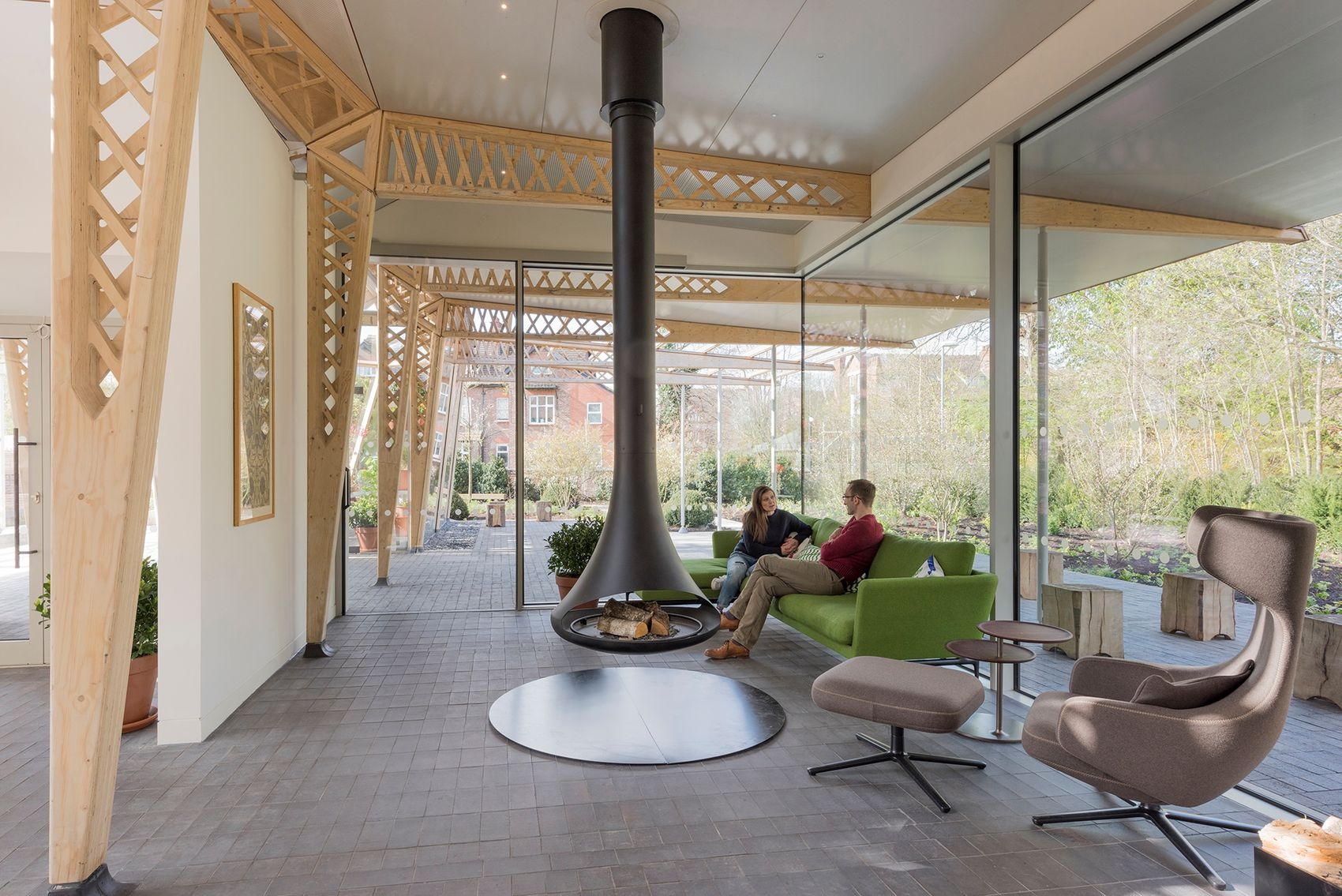
Maggie's Centre
These projects exemplify how wood can be used innovatively and sustainably to create urban spaces that meet the needs of modern society. In addition to its aesthetic and energy efficiency, wood stands out for its natural resistance to earthquakes and fire, making it a safe option for constructing large buildings. Compared to other materials, wood offers additional advantages. By embracing wood not only as a material but as a solution for the architecture of the future, we are building a greener, more efficient, and, above all, safer world. Wood, with its beauty, versatility, and sustainable potential, is the key to transforming architecture and our cities for future generations.
(03)
F.A.Q. - Frequently Asked Questions?
What is the carbon footprint?
The carbon footprint refers to the amount of carbon dioxide (CO2) and other greenhouse gases emitted directly or indirectly by human activities, including the production of building materials. Wood, being a natural and renewable material, contributes to reducing the carbon footprint, as it absorbs CO2 from the atmosphere during its growth and stores it in its fibers. When used in construction, wood "traps" this CO2, preventing it from being released back into the atmosphere. Compared to materials like concrete or steel, which have a much more carbon-intensive production process, wood offers a more eco-friendly and sustainable solution, helping to minimize the environmental impact of construction.

